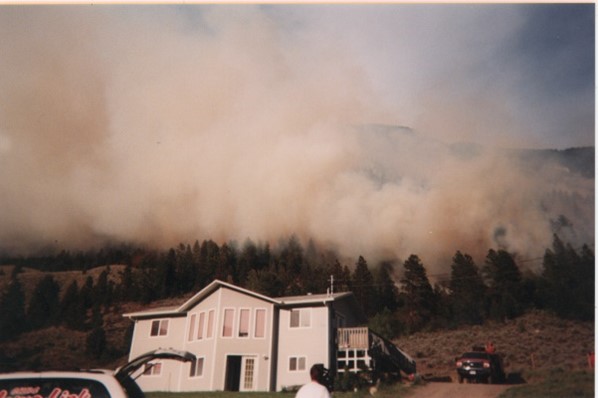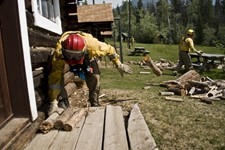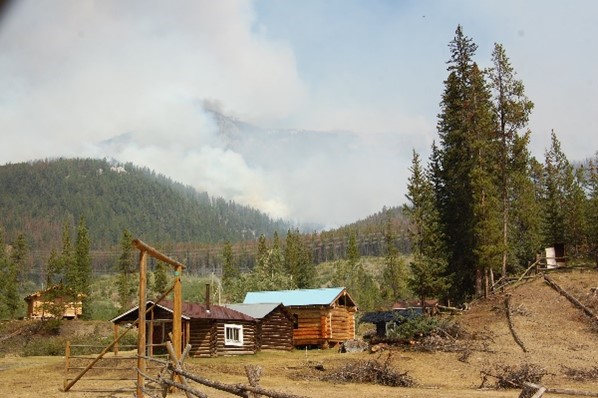
Wildfires can quickly spread from the forest to a community, becoming what is known as an “interface fire.” In the interface, where the wilderness and urban development meet, homeowners must take the time to FireSmart their properties.
When a wildfire presents an imminent threat to structures, such as homes, BC Wildfire Service’s Structure Protection Specialists will assess the structures to determine how defendable they are. A defensible home has good FireSmart principles applied to the structure and surrounding area. Structural Protection Units (SPUs), consisting of sprinkler systems specifically designed to defend structures, may then be deployed to the incident. These sprinklers essentially create a “humidity bubble” (streams of water) around the structure that moisten roofs and other surfaces. This application of water can be effective in extinguishing airborne sparks and embers from a wildfire.

It’s more likely that an SPU will be set up on a structure if it is on a property that has been “FireSmarted.” If a structure and the surrounding property are FireSmart, it will take less time to set up the necessary sprinklers to cover the structure.
Neill Moroz, a Structural Protection Specialist with the BC Wildfire Service, spoke about the impact that implementing FireSmart principles has when deciding how to protect a structure.
“It’s incredibly difficult to make those decisions, based on the time we have, how far away a fire is, the resources and equipment we have available, whose house we can protect and whose we can’t. It really comes down to who has taken the time to FireSmart their own property. People that have followed the FireSmart program and have done everything the program requires, we probably have to do hardly anything or very little to save their property,” Says Moroz
A major reason a particular structure may not receive sprinkler protection is that FireSmart principles have not been used on the property. Lack of FireSmarting increases the time required for personnel to set up enough sprinklers to protect it sufficiently. These decisions are difficult to make and often need to be made quickly.

“We’re out there making those decisions, and when we look to decide to FireSmart a property, it’s that non-combustible zone that we want zero combustibles, how long will that take us to do? Because that’s all we have time to do – remove the fine fuels, remove the combustibles, and then we also have to put up a sprinkler to increase the humidity around the home,” Moroz explains.

“We know that when homeowners have completed Zones 1, 2, and 3 and continue to repeat these areas every year, their properties will be safe out there. If you want to live in an interface area, protecting your property starts with you,” adds Moroz.

You can use the FireSmart Home Ignition Zone Assessment Score Card for your own property to see what changes will make the most significant difference in reducing your home’s risk from wildfire. More information about FireSmart is available at FireSmartBC.ca or FireSmartCanada.ca.

To learn more about structure protection, visit bcwildfire.ca.
